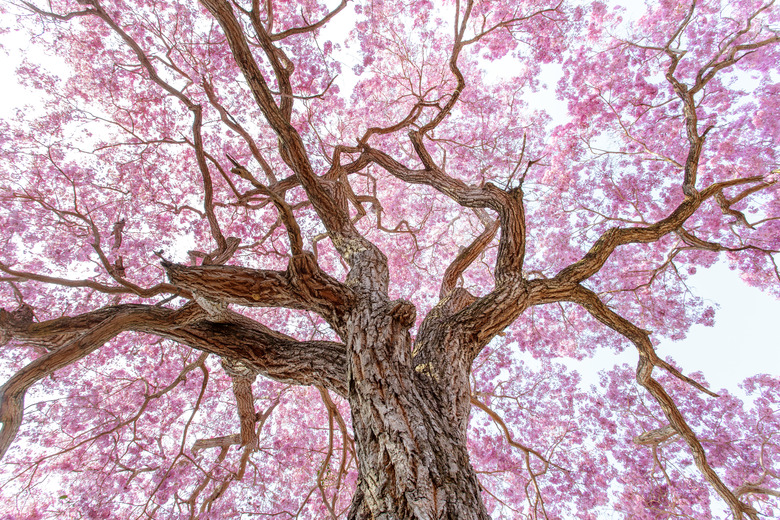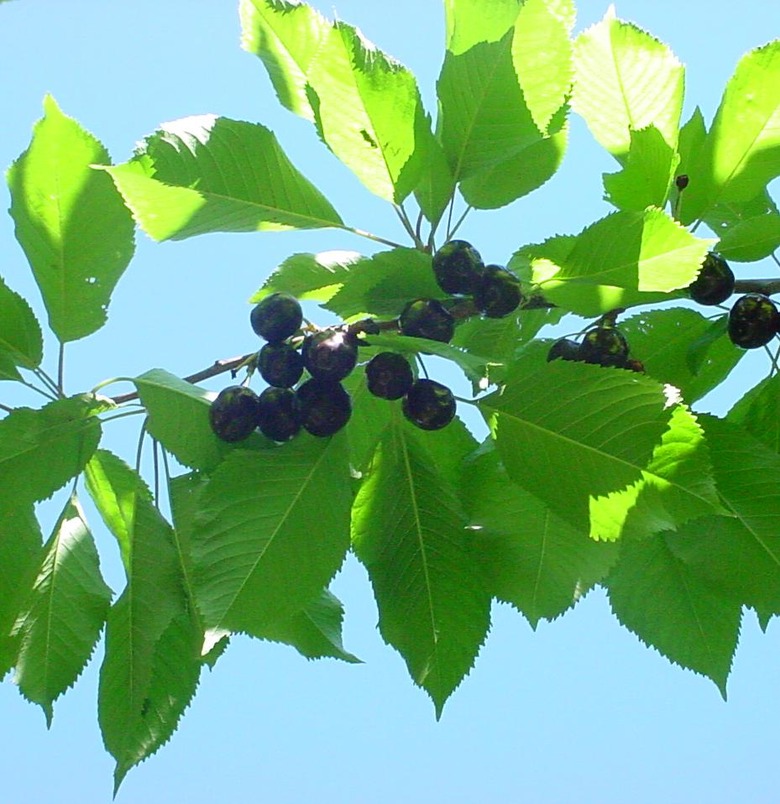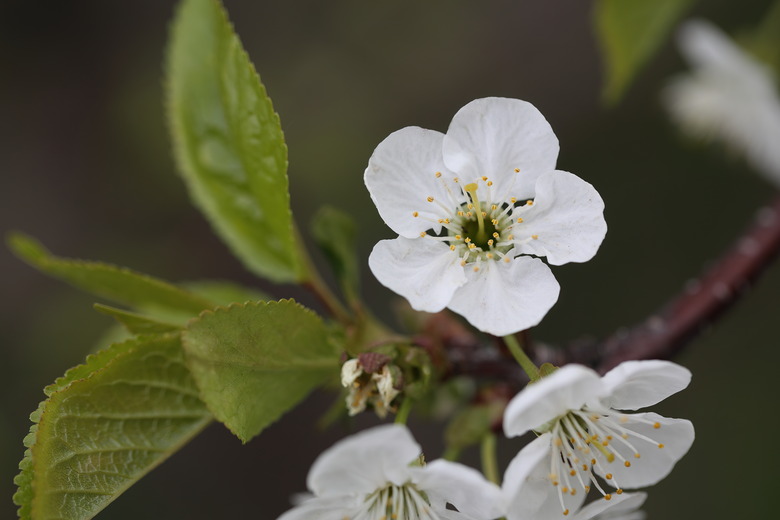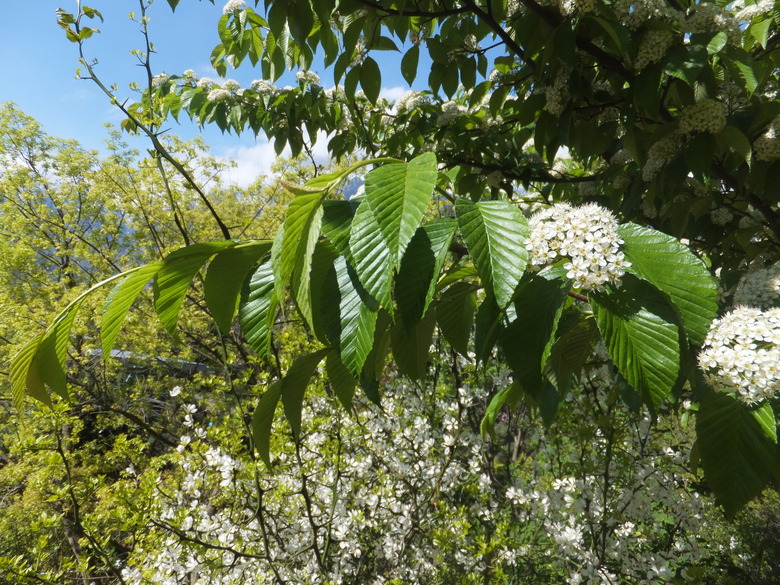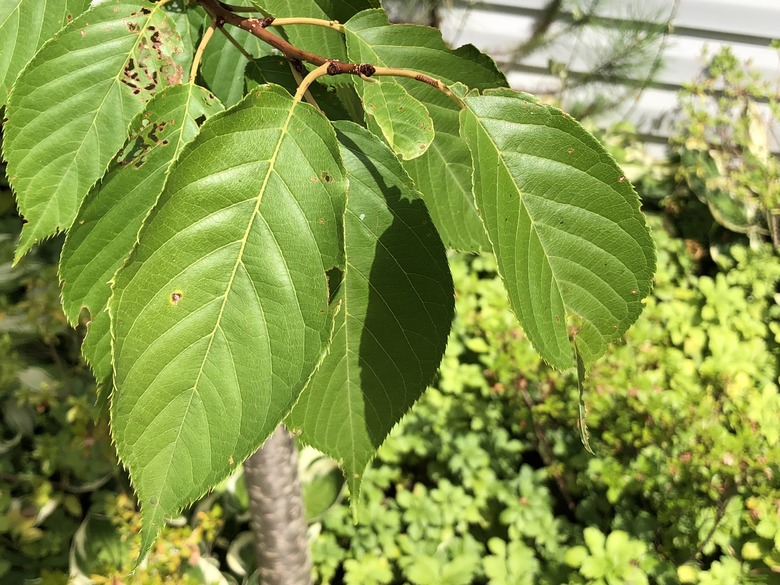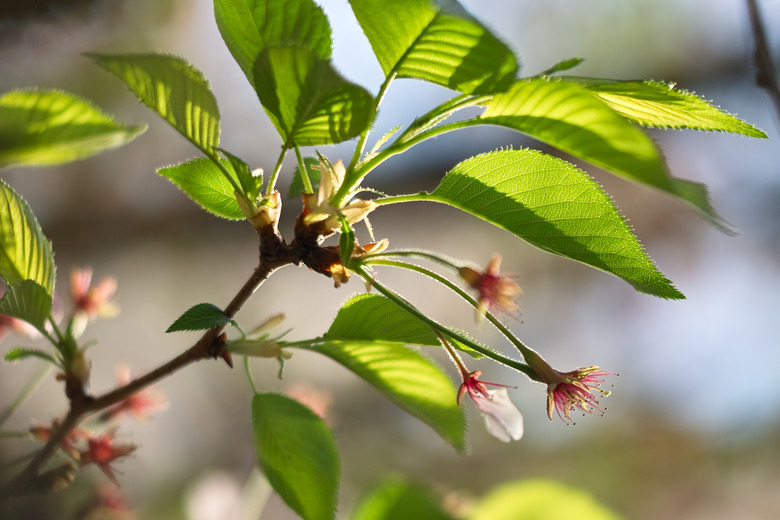Cherry Tree Leaf Identification: Edibles And Ornamentals
Some cherry trees (Prunus spp.) are grown primarily for their edible fruit, which is eaten fresh or used in baking. Other cherry tree varieties are prized as ornamentals thanks to their stunning display of spring flowers.
Analyzing the color, shape and margins of the leaves can be useful when it comes to cherry tree identification.
Edible Cherry Tree Leaves Identification
Here's how to identify the edible fruit kinds of cherry trees by their leaves.
Bing Cherry Tree
The popular Bing cherry tree (Prunus avium 'Bing'; zones 5 to 8), which is grown for its large, heart-shaped fruit, has simple leaves, which means they are not divided into leaflets. Bing cherry tree leaves are dark green and grow to lengths of 3 to 6 inches. The margins of the leaves have "teeth" with blunt tips.
Montmorency Cherry Tree
The most commonly grown tart cherry tree in the U.S. is the Montmorency cherry tree (Prunus cerasus 'Montmorency'; zones 4 through 7), which has 3-inch, elliptical-shaped leaves with sharp tips. The dark green foliage has a leathery texture. The margins are double-toothed, which means that each "tooth" has another smaller "tooth" within it.
Wild Cherry Tree
The wild cherry tree (Prunus serotina; zones 3 through 9) produces edible fruit that is too bitter to be eaten fresh, which can be made into jams and jellies.
The leaves of the wild cherry tree are glossy green in color, narrow and may be lance-, elliptical- or oval-shaped, with lengths of up to 5 inches. The tips of the leaves are pointed, and they have fine teeth along the edges. The leaves of this species also have yellow-brown hairs on the undersides.
In autumn, wild cherry tree leaves turn an orange-yellow color. The foliage also emits an almond-like scent when crushed.
Warning
The leaves of several types of edible cherry trees, including sweet cherry cultivars and the wild cherry tree, contain cyanogenic compounds that make them extremely toxic if ingested.
Ornamental Cherry Tree Leaves Identification
Now let's look at how to identify the leaves of ornamental cherry trees.
Kanzan Cherry Tree
The Kanzan cherry tree (Prunus serrulata 'Kanzan'; zones 5 through 9) is a popular cultivar of the Japanese cherry tree. This tree has alternating leaves, which means that each node produces a single leaf, and the leaves alternate on either side of the stem. The leaves grow to lengths of about 5 inches.
The leaves of the Kanzan cherry tree are oval- or lance-shaped and have serrated margins. Leaves have a reddish-copper tinge when they first emerge in the spring, but the mature leaves are dark green.
The Kanzan cherry tree also offers good fall color, with the leaves turning attractive shades of orange and bronze.
Yoshino Cherry Tree
The leaves of the Yoshino cherry tree (Prunus x yedoensis; zones 5 to 9), a popular ornamental cherry tree hybrid, has leaves similar to that of the Kanzan cherry, with similar fall color.
However, you can differentiate between Yoshino and Kanzan cherry tree leaves by looking at the petioles, which is the stalk that connects the leaves to the stem. Both the Kanzan cherry tree and the Yoshino cherry tree have wart-like glands on the petiole.
According to the NC State Extension, in Kanzan cherry trees, the warts are often far from the edges of the leaf blade, while on Yoshino cherry trees, the warts usually touch the leaf blade.
References
- North Carolina State Extension: Prunus Avium
- North Carolina State Extension: Prunus Serotina
- North Carolina State Extension: Prunus Serrulata
- North Carolina State Extension: Prunus x Yedoensis
- Arbor Day Foundation: Kanzan Cherry
- Arbor Day Foundation: Bing Cherry
- Arbor Day Foundation: Yoshino Cherry
- Arbor Day Foundation: Montmorency Cherry
- Missouri Botanical Garden: Prunus 'Kanzan'
- Missouri Botanical Garden: Black Cherry
- Missouri Botanical Garden: Prunus × yedoensis
